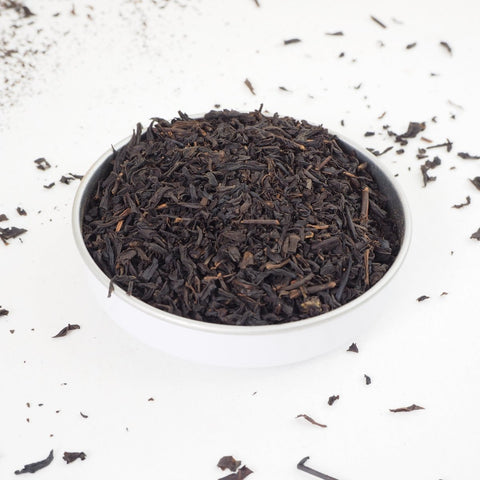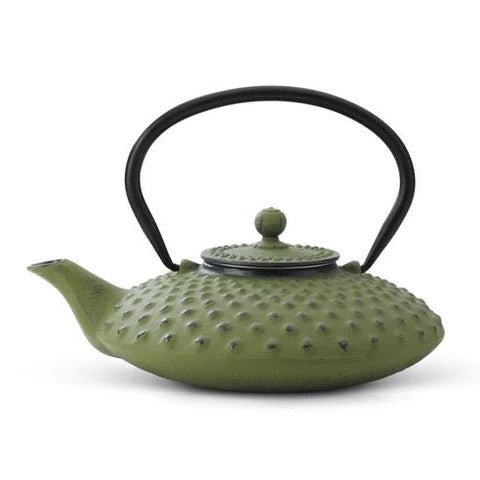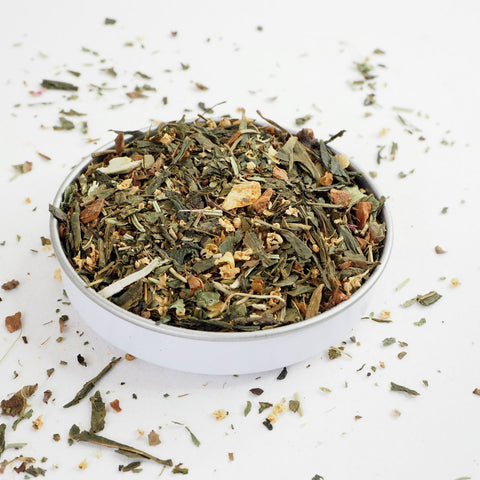How is Loose Leaf Tea made?
All tea comes from the same plant, the Camellia Sinensis. The way that the tea leaves are processed is what changes the appearance and flavour the tea. White tea such as Silver Needles is hand-picked when the leaves are young and just gently dried. At the other end of the scale is black tea, the leaves for black tea are older and processed in a way that allows full oxidisation. This fully oxidised leaf producing the dark tea that is most common here in the UK.
Unlike teabag tea, loose leaf tea isn’t crushed into smaller pieces so that it fits into a teabag. In some cases, the leaves are whole, almost as if they have just been picked from the tea plant. Most loose leaf tea has been rolled or broken a little but it’s still much, much larger than tea bag tea (Fanning’s).
You might like the taste of tea from a teabag and that’s fine, but to really enjoy the really flavour of tea you must try loose leaf tea. You’ll also open your taste buds to so much choice, at Teaspoon Tea Co we have around 50 teas to choose from and we’re always trying new tea.
Tea processing
There are five main stages of tea processing: Withering, Rolling, Drying and Grading and Cleaning plus for some teas there is the additional stage, that of Oxidisation. In this blog we'll explain what they all are and hopefully leave you knowing a bit more about where and how your favourite loose leaf tea is created.
The main purpose of processing is to reduce the amount of water contained within the tea leaves. Freshly picked tea leaves contain around 70% water and to produce 1Kg of ready to drink tea we need to pick around 4Kg of tea leaves. Processing by methods such as withering, rolling and drying reduces the water content to just 3%.
1. Withering
Enter the Withering room and you'll find leaves spread out along long raised metal troughs. The tea leaves are left in these troughs for 8 to 14 hours, usually over night. Traditional tea factories would have there withering rooms on the top floor and would have lots of windows to allow a good draft. The factories would even be built high on hills to help the draft further. This meant the process relied on the weather and so nowadays modern factories use fans for a more controlled environment. The tea leaves lie of wire mesh and the fans blow air down the troughs. The tea is periodically turned to prevent cold and ensure even processing. During withering the chemical composition of the tea leaf changes. Levels of chlorophyll begin to reduce and caffeine levels increase. This is when flavour compounds that are responsible for teas unique taste and aroma develop.
When producing green to the withering process is skipped and the leaves go through a drying stage before going on to the rolling room. For the production of green tea most is passed through a rotating oven heated to 65℃. This process is called "Killing The Green" and reduces the moisture in the tea leaf by 20% halting oxidisation before the leaves go into rolling.
In the production of White tea the leaves are lightly steamed or laid in the sun for slower natural withering.
2. RollingAfter withering the tea leaves are transported to the Rolling room. Rolling machines use large drums that are loaded with tea leaves. The loaded drum had a lid that applies pressure to the leaves. When the machine is activated the drum moves with an orbital motion over a larger diameter plate with rased fins that tear, squeeze and bruise the leaves.
The rolling machine serves three purposes:
a. It squeezes out moisture
b. It breaks down cells in the tea leaves that in turn encourage faster and fuller oxidisation.
c. It changes the shape and size of the leaves.
After an initial pass through the Rolling machine the leaves might need to pass through again under increasing pressure to achieve the desired size of tea leaf.
Some teas such as high grade green teas and Oolong tea are hand rolled even today. This is not for reducing moisture but more for flavour and appearance, like the neat pearls of Dong Ding Oolong. Some green teas like our own Lung Ching Dragonwell aren't rolled at all.
Oxidisation
The Oxidisation process is both optional and veried depending the type of tea being produced. If oxidisation is required the tea is first passed through a machine that seporates the tangled rolled leaves and spits them out over the cool factory floor. Sometimes raised concrete slabs are used. The tea leaves are left for a period of time depending on the level of oxidisation required. The oxidisation process and the end result can be affected by the local climatic conditions of the tea factory, this being one thing that changes the taste of tea from different regions. After oxidisation the leaves look very different from the freshly picked tea leaves, being darker in colour and having a very different smell.
3. Drying
There are a number of different ways that tea is dried. The separated tea leaves can be loaded onto conveyors and passed through ovens or collected onto circular trays and loaded vertically into a slow spenning drying oven. The trays turn around allowing air circulation whilst the oven blows warn air. Lapsang Souchong, the smokey tea is passed over smoke produced from pine wood. This gives Lapsang Souchong its distinctive love it or hate it flavour and smokey smell. Once the tea is dried the flavours are locked in, only to be released once the tea is brewed.
4. Cleaning
After drying the tea leaves are cleaned, this is really a sorting process that removes stalks, fibres and leaf veins that are undesirable. Nowadays this is done by machine, the tea leaves are passed over a series of electrostically charged rollers. The leaves stick to the rollers and the bits fall to the bottom and are collected for compost.
5. Grading
The cleaned tea is now sorted into different grades. Grading is done by tipping the loose leaf tea onto a machine that is accentually a series of vibrating beds. Each bed is constructed of steel mesh of ever increasing hole size. The tea leaves jiggle there way along the bed and assuming they are large enough make there way to a collection hopper. If the leaf is to small for the level it is on it will fall through to the next level and so on. The lowest level of this process is where the fannings are collected, this being the tea used in Teabags.
The five stages here are general, the production of Oolong Tea involves a number of other steps.
Loose Tea is better for the environment.
Loose Leaf Tea is the most environmentally sound way of enjoying a cuppa. Many companies claim to be environmentally conscious by offering their tea in plastic free teabags. It is true that this is better for the environment than teabags that do not compost. However, plastic free teabags still require energy consumption when manufactured. There is also extra processing required to get the tea ready for the teabag, crushing the leaves into dust or fanning’s, this again requires energy.
We say, "Why produce something that isn’t needed"
To enjoy great tea at home all you need is a teapot and a cup, anything else like an infuser our tea strainer is just there to make life easier.
Once you’ve enjoyed your cuppa simply through your used tea leaves on the garden or in the composed bin,
To be truly environmentally friendly, drink tea, loose leaf tea.




Comments (0)
There are no comments for this article. Be the first one to leave a message!